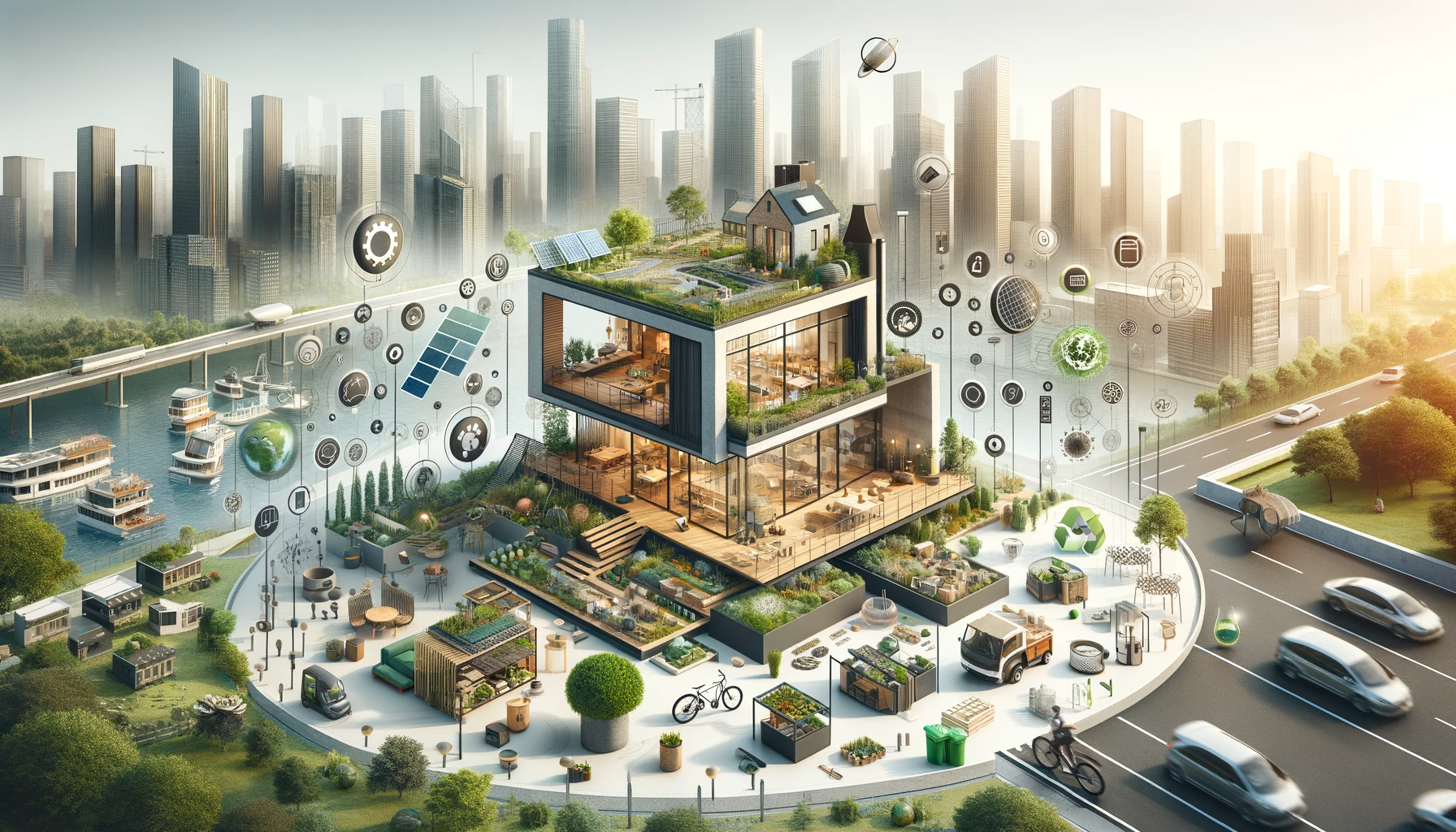Sustainable design, a fusion of aesthetics and ecological sensibility, is redefining modern architecture and product design. This approach offers solutions that are not only environmentally-friendly but also efficient and aesthetically pleasing.
1. Energy Efficiency
Sustainable design prioritizes energy-saving features such as passive solar design, efficient insulation, and natural ventilation, drastically reducing energy consumption1.
2. Resource Conservation
Opting for recycled or sustainably harvested materials helps conserve resources. For instance, bamboo, a fast-growing plant, is often favored over traditional hardwoods2.
3. Waste Reduction
From modular designs that adapt and grow with user needs to recyclable products, sustainable design focuses on minimizing waste throughout a product’s lifecycle3.
4. Integrating Nature
Biophilic design, which integrates nature into the built environment, has shown to improve well-being, productivity, and creativity among inhabitants4.
5. Longevity and Durability
Sustainably designed products and structures emphasize durability, reducing the frequency of replacements and repairs and conserving resources in the long run5.
6. Inclusive and Human-Centered
A sustainable design approach ensures accessibility and usability for everyone, including those with disabilities, ensuring a broader positive impact6.
7. Economic Benefits
Green buildings and sustainable products often lead to long-term financial savings in terms of reduced energy bills, water conservation, and lower maintenance costs7.
8. Aesthetic Appeal
Sustainability doesn’t compromise on beauty. With evolving materials and techniques, designers are crafting eco-friendly solutions that are both functional and visually compelling8.
Conclusion
Sustainable design harnesses the power of innovation to cater to both environmental and human needs. As it continues to shape our world, its myriad benefits underscore its crucial role in our future.
References:
Footnotes
- Yeang, K. (1999). The green skyscraper: The basis for designing sustainable intensive buildings. Prestel.
- Priesnitz, W. (2010). Bamboo: The sustainable design material. Natural Life Magazine.
- Charter, M., & Tischner, U. (Eds.). (2001). Sustainable solutions: Developing products and services for the future. Greenleaf Publishing.
- Kellert, S. R., Heerwagen, J., & Mador, M. (2011). Biophilic design: The theory, science, and practice of bringing buildings to life. John Wiley & Sons.
- Ashby, M. F. (2009). Materials and the environment: Eco-informed material choice. Butterworth-Heinemann.
- Steinfeld, E., & Maisel, J. (2012). Universal design: Creating inclusive environments. John Wiley & Sons.
- Kats, G. (2003). The costs and financial benefits of green buildings. A Report to California’s Sustainable Building Task Force.
- Wines, J. (2005). Green architecture: Design for a sustainable future. Thames & Hudson.


